Bridewell Cyber Threat Intelligence (CTI) has identified a widespread ongoing credential harvesting campaign that has been ongoing since July.
The threat actors, believed to be connected to Storm-1575, are utilising the Dadsec platform to conduct widespread phishing of global organisations to steal Microsoft 365 credentials. The threat actors are using Cyber Panel, an open-source web development panel, hundreds of Domain Generated Algorithm (DGA) domains that are created daily to host credential harvesting pages.
DGA is a technique used by malicious actors to rapidly generate multiple domain names that can be used to host malicious content, such as malware, phishing sites, and command-and-control servers. It is used to evade detection and to ensure that their malicious content is not blocked by security controls.
The threat actors are using a variety of lures to redirect victims via services such as Bing, Google AMP and Microsoft Customer Voice before landing them on credential harvesting pages. The infrastructure associated with this activity is sat behind Cloudflare, a technique used to mask the origin of the malicious servers and evade detection by security tooling.
Our Cyber Threat Intelligence team has been working with our Security Operations Centre (SOC) on two incidents that began our initial investigations. After conducting research into this campaign, Bridewell CTI identified over 500 DGA domains, with up to 900 associated subdomains all generated since July daily as part of this activity. Utilising this information, we have been able to identify historical successful connections between other Bridewell customers which had gone unidentified by conventional security tooling. We have also ensured that affected customers had passwords reset to prevent account takeover.
We were also able to uncover additional infrastructure belonging to the Dadsec platform and threat actors utilising this toolset in campaigns. Based on the description provided by Microsoft and the findings in this report, we assess with a high degree of confidence that this campaign matches the cluster of activity associated with Storm-1575.
Whilst we attribute the campaign to the same cluster, it should be noted that any malicious threat actor with sufficient intent can purchase and run a campaign through the Dadsec platform for very little sophistication and financial investment.
The campaign is ongoing and we will share all identified IOCs in this report. Furthermore, we are sharing the process and analysis steps taken by our CTI team when supporting their IR teams on customer engagements. Additionally, CTI has worked closely with the teams at ANY.RUN, who collaborated with Bridewell to improve detection of this campaign within their platform as well as contribute to this report.
By consuming a threat intelligence service, you should expect that intrusion analysis is being performed by the threat intelligence team. This will ensure they are producing actionable insights and intelligence from attempted and successful attacks against your organisation. Bridewell CTI uses a blend of automated and manual analysis processes to keep you informed and protected against credible threats to your business and sector.
2. Initial Incidents
On the 28th and 29th of September 2023, we observed two of our customers, working in different sectors, receiving suspicious emails that ultimately directed users to fake Microsoft 365credential harvesting pages. In one instance, the organisation received over 500 emails with 25 being successfully delivered.
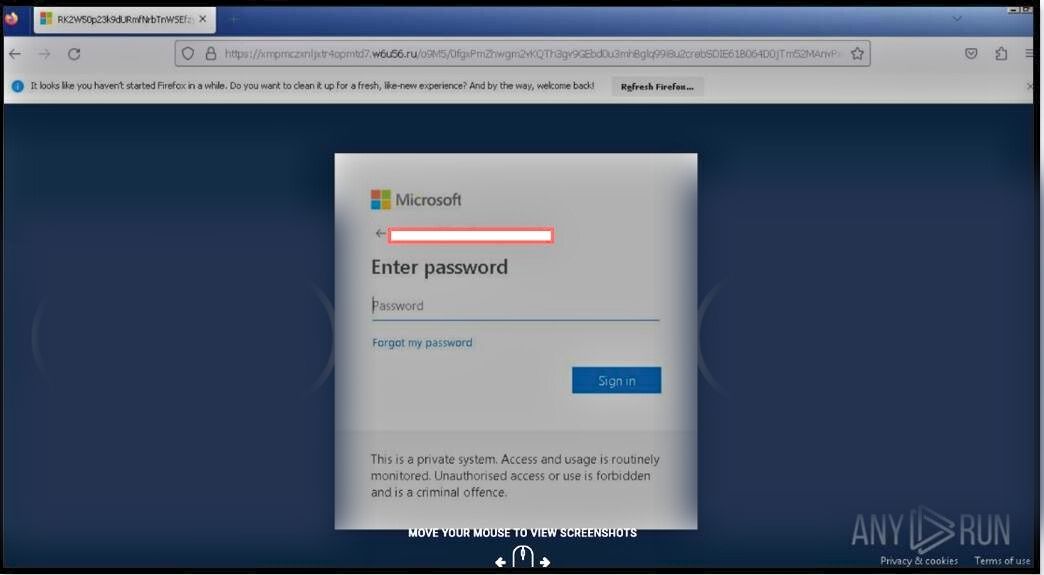
Figure 1. Fake Microsoft 365 Credential Harvesting Page
2.1 Indicators
URL: 1e0yq0dnmzxs8ato15f0[.]15cl6[.]ru
URL: xmpmczxnljxtr4opmtd7[.]w6u56[.]ru
Based on the indicators from each incident, our Security Analysts assessed that the domains in both may be connected. Comparing the two indicators above, we noted the following traits:
- Both domains have a .RU TLD.
- The domains are 5 alphanumeric characters long.
- The subdomains 20 alphanumeric characters long.

Figure 2.Example infection chain
- User receives an email containing a variety of lures to share a file, which includes typically a HTML file attachment.
- When the user clicks the link, the browser connects to a number of legitimate services abused for redirecting (e.g. Bing, Google AMP, Microsoft Customer Voice).
- The user is redirected to the threat actor infrastructure hosted behind Cloudflare. The website presents the turnstile captcha to validate a user session.
- The user is then presented with a fake Microsoft 365 page with user email pre-populated including their company logo.
- The kit supports MFA and will run the user through the process, meanwhile an API acts as the user to middle man the challenge responses and issue user credentials to the threat actor via the web panel.
Example infection chains can be found here (note: whilst possible, no abuse of the Amazon r2.dev domain was observed during our research): https://twitter.com/anyrun_app/status/1709193919118844267
3. CTI Investigation
Types of questions the IR team wanted to understand:
- Was there a connection between our customers?
- Were there other similar phishing emails delivered to our customers?
- Do we have any more information about this campaign?
CTI began the investigation with these questions in mind as we began two strands of work:
- An initial internal hunt in our customer environments based on visible characteristics from known IOCs
- Uncover additional infrastructure or domains based on open-source research to uncover more indicators and context
4. The Campaign
Based on the information provided by the IR team, we can use information about the domains, combined with observed technologies utilised by the threat actors to uncover additional infrastructure. By analysing the URLs within the ANY.RUN sandbox, we were able to identify the use of Cyber Panel, an open-source web hosting platform.
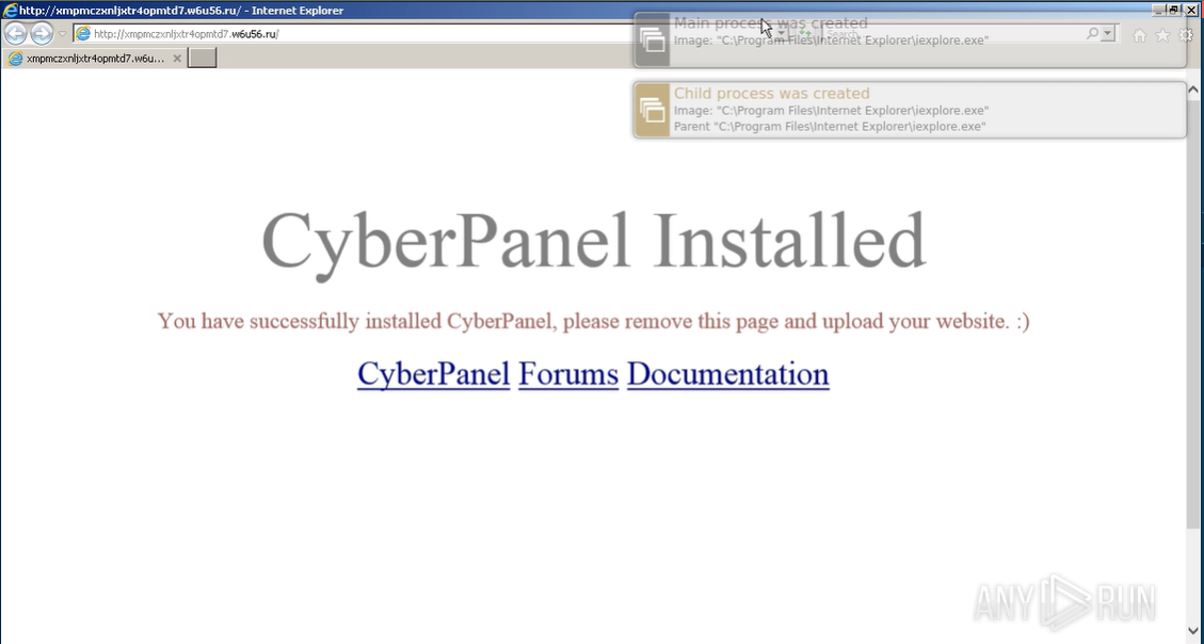
Figure 3. CyberPanel page on hosting infrastructure
4.1 Additional Infrastructure
Passive internet scanners are an incredibly good way of pivoting on identifiable characteristics for known bad infrastructure in order to identify servers based on these characteristics. We began by understanding what the known indicators from the incident looked like in the tool FOFA:

Figure 4. FOFA result for known indicator
Based on the known infection chain, we can see that the domains are sat behind Cloudflare. This can be problematic in that this is an effective mechanism for masking the true destination of the malicious infrastructure. However, we were able to observe the use of the open-source hosting framework, CyberPanel. This gives us an indication of the technologies potentially used by the threat actors.
Pivoting off known information regarding Cloudflare, CyberPanel and .RU TLD we can return additional infrastructure: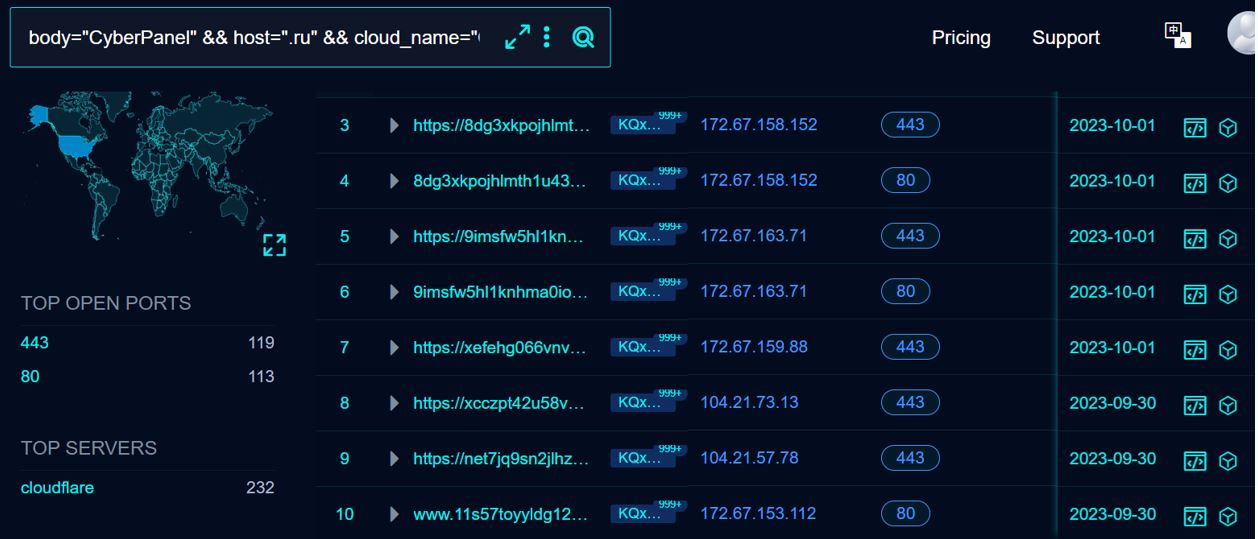
Figure 5. Wider search for known indicators using FOFA
Whilst not exhaustive, the above search gives us an indication of the size and scale of the potential campaign and provides our security team additional indicators in which to search for, building from the new information.
When we begin to analyse the domains we’ve collected further from FOFA, we can begin to identify additional characteristics of the domains involved in this campaign. The graphs below visualise some of those characteristics:
- The domains are registered with R01-RU and MAXNAME.
- The domains host a number of subdomains
- The sites are using both Let’s Encrypt, R1 and Google Trust Services LLC certificates.
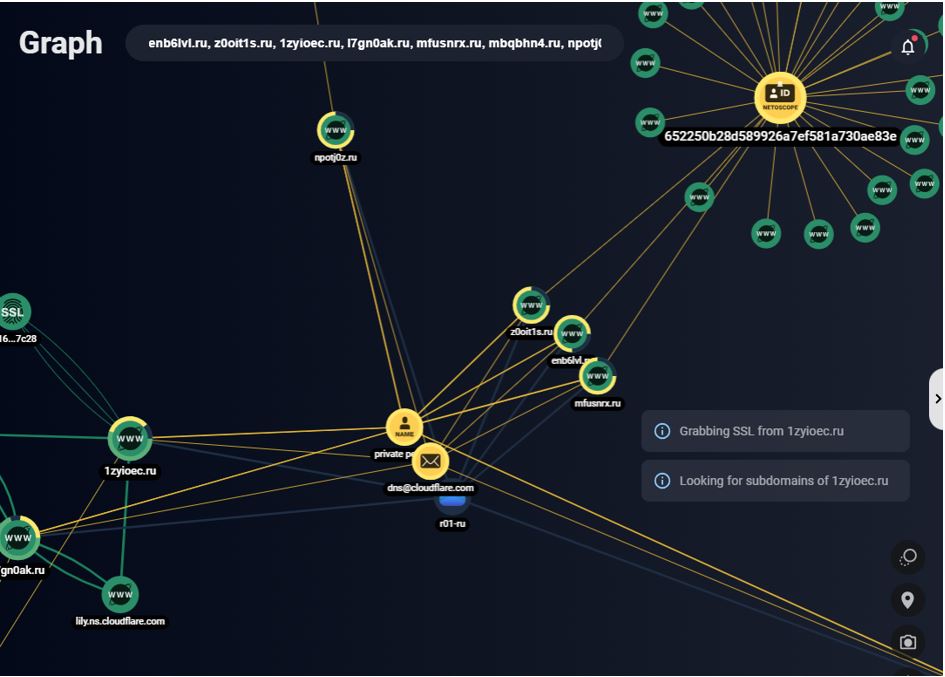 Figure 6. Correlation between domains and WHOIS (Group-IB Threat Intelligence Platform)
Figure 6. Correlation between domains and WHOIS (Group-IB Threat Intelligence Platform)
Graph showing the connection between domain Registrars
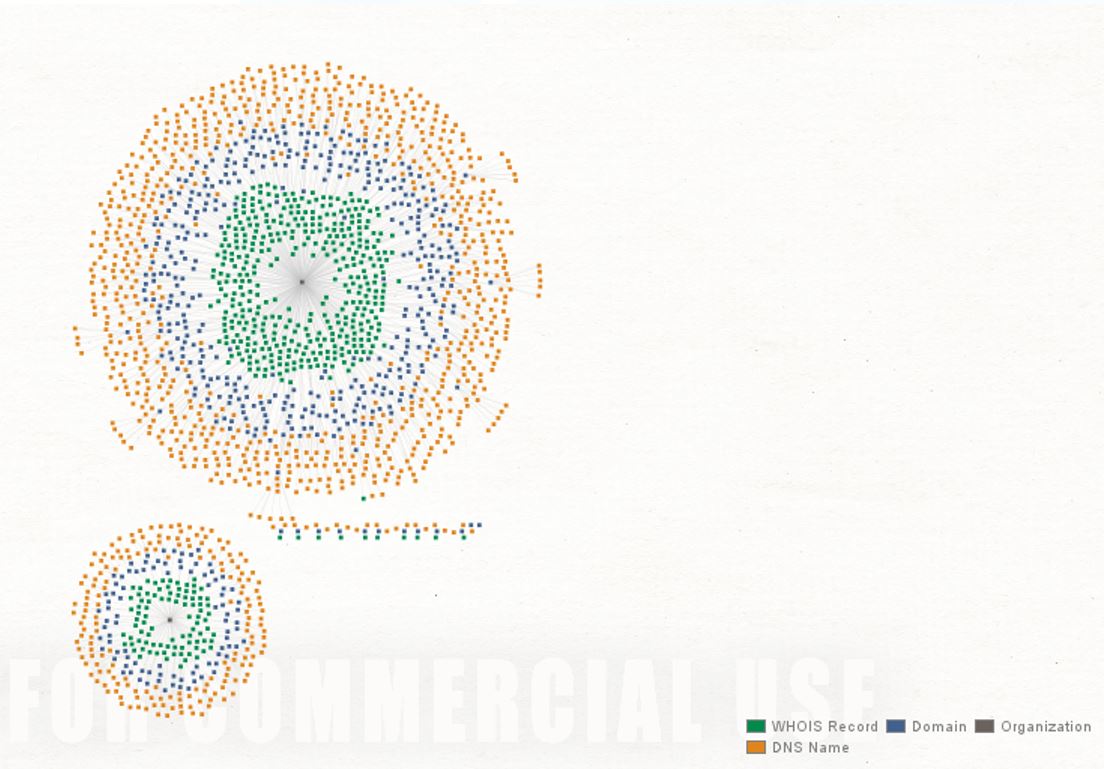 Figure 7. Correlation between WHOIS records and Registrars
Figure 7. Correlation between WHOIS records and Registrars
When enriching our results further based on known features and passive DNS, we are able uncover additional domains. In total, at the time of analysis, we identified ~500 domains containing 900 subdomains believed to be linked with this campaign.
Based on WHOIS information, we can use the creation date of the domains to help understand when the campaign began and how active the ongoing campaign is:
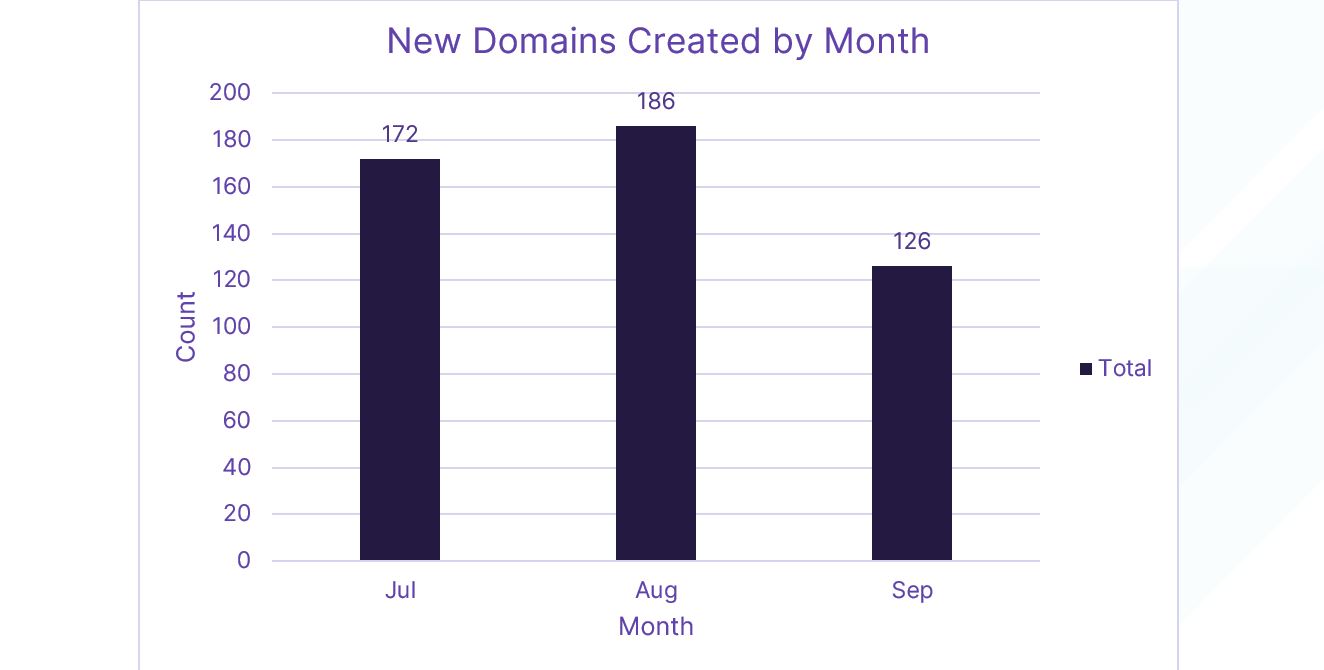
Figure 8. Timeline of new domain creation dates by month
The threat actor is actively generating hundreds of new domains every month to support his activity. A recent article by Infoblox details are new shift by threat actors to utilise RDGA’s instead of DGA’s. Whilst we get to grips with the new definitions, it appears that the frequent registration of new domains by threat actors to evade detection matches what we are seeing here and by other criminals such as malware authors. The goal of threat actors to utilise RDGA’s is to ensure that each new domain is considered clean by security tooling as and when the threat actors deploy them in campaigns.
A full list of domains identified by Bridewell can be found at the following link: https://github.com/Bridewell-CTI/IOCs/blob/main/2023/10/Storm-1575.txt
4.2 Analysing known indicators
Going a step further, we decided to further enrich and analyse our known indicators to help understand more about the campaign, such as:
- What lures are the threat actors using?
- What file types are being used?
- How many samples are being submitted per day?
- What and how many targets have been affected?
The following image demonstrates the number of samples submitted to Virus Total that communicate with our known domains:
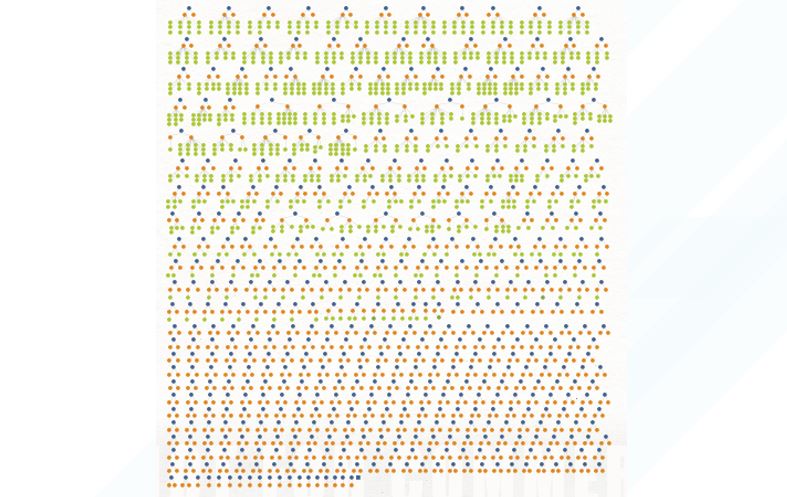
Figure 9. Graph showing VT file submissions by subdomain
Whilst this indicates that a number of the domains have been utilised in active campaigns, it shows that a number of the remaining domains either haven’t had samples submitted by victims/ targets, or, due to their young age, have yet to be utilised.
4.2.1 What lures are the threat actors using?
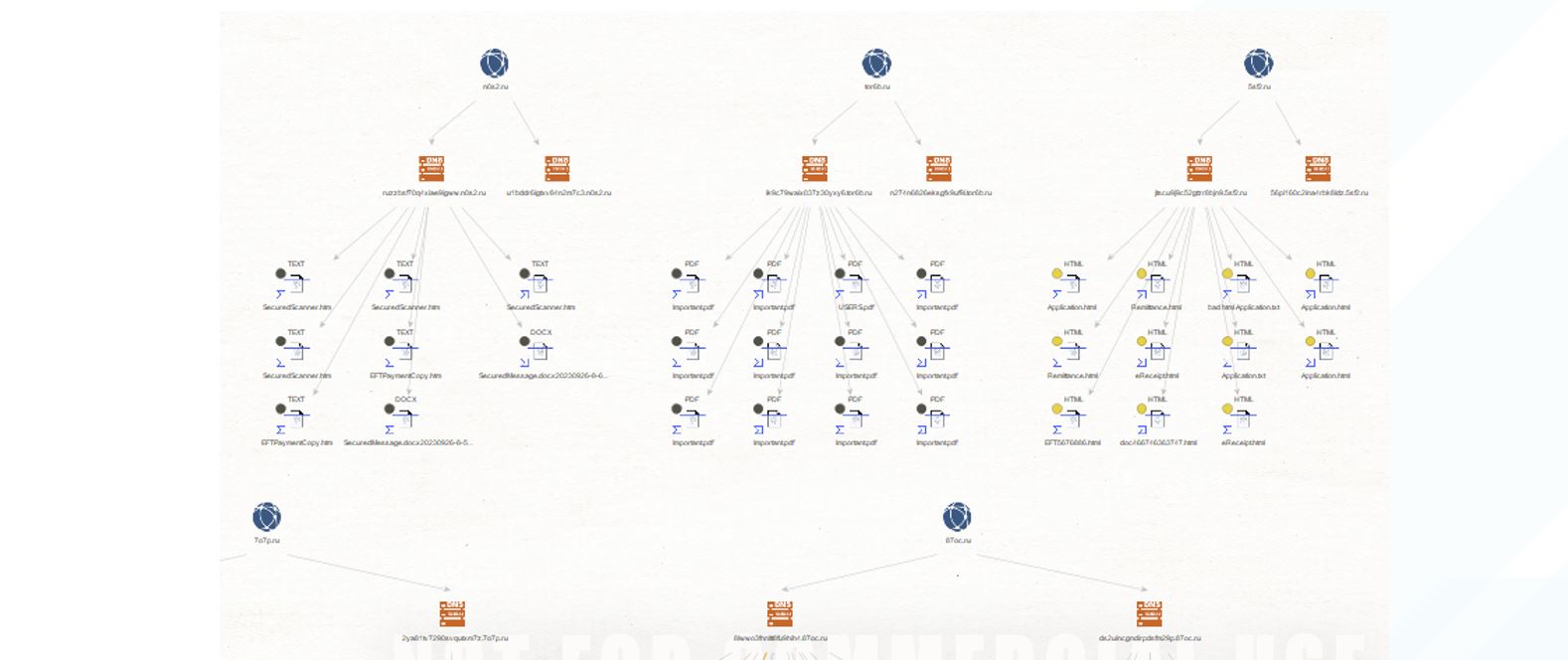
Figure 10. Closer inspection of VT submitted files with subdomains
By extracting the subject information, we are able to identify the types of lures that the threat actors are using in this campaign. By grouping on keywords we were able to identify the following themes:
- Advanced Payment or Payment Receipt/Confirmation
- Secure or Scanned Documents
- Invoices
- Employee Handbook ({Organisation})
- VM/Audio Recordings
- Important Updates
- 2FA or MFA setup/update
4.2.2 How long has the campaign been going on?
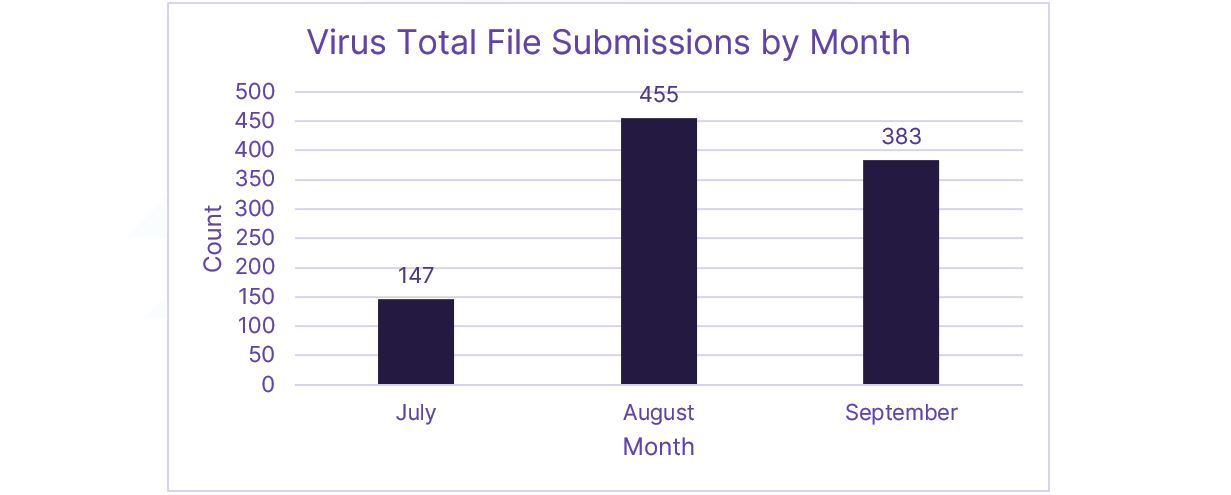 Figure 11. File submission dates by month
Figure 11. File submission dates by month
When comparing file submission dates, we can see that there is a slight delay between domain creation and the activity beginning and being submitted for analysis in Virus Total. Based on the current available information, it's clear that the campaign is ongoing.
4.2.3 What file types are they using?
By collecting this information from Virus Total, we can see that the majority of samples in this campaign contained some form of HTML attachment that was used to initiate the infection chain.
| Attachment Type | Count |
| DOCX | 9 |
| HTML | 800 |
| JAVASCRIPT | 15 |
| 144 | |
| TEXT | 16 |
4.2.3 What sectors have been affected?
Based on analysis of the base64 encoded email addresses populated in the phishing URLs, CTI identified organisations operating in over 30 different sectors. The most common were Financial Services, Manufacturing, Local Government and Energy. Using the organisation head office information 27 organisations of the 54 countries identified were based in the United States and 7 were within the United Kingdom.
Based on this information, we can assess with a high degree of confidence that targeting is directed at Western countries. We can also assess with high confidence that targeting is not directed at a specific sector or victim profile.
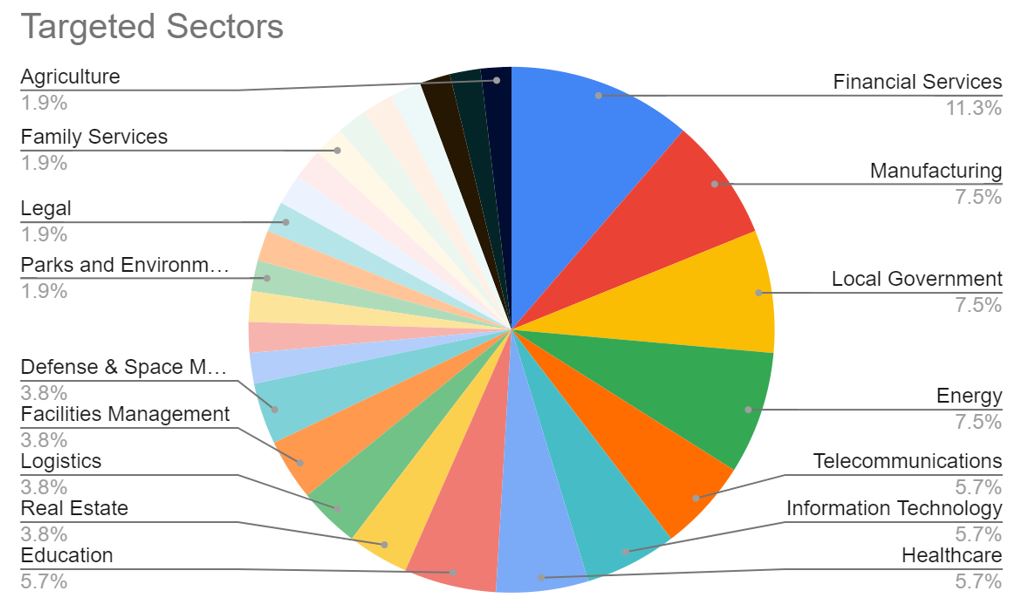
Figure 12. Pie Chart showing affected sectors
5. Attribution
Credential harvesting is nothing new and it's utilised by many threat actors. Fortunately, we were provided a key piece of information that was relevant and interesting to this campaign by our SOC. Microsoft Threat Intelligence linked an initial domain to activity conducted by Storm-1575.
5.1 Who are Storm-1575?
According to Microsoft:
“Microsoft has identified Storm-1575 as a cluster of activity using known infrastructure for several Phishing as a Service (PhaaS) campaigns on the Dadsec platform. The Dadsec platform allows cybercriminals to launch phishing campaigns without developing the phishing websites themselves. These websites are designed to look like legitimate web portals and are used to harvest user credentials and authentication tokens. This alert triggers upon a network connection to a domain affiliated with a Dadsec phishing page managed by a developer that Microsoft tracks as Storm-1575.”
Based on the description provided by Microsoft and the findings in this report, Bridewell assess with a high degree of confidence that this campaign matches the cluster of activity associated with Storm-1575. Whilst we attribute the campaign to the same cluster, it should be noted that any malicious threat actor with sufficient intent can purchase and run a campaign through the Dadsec platform for very little sophistication and financial investment.
5.2 What is Dadsec?
As Microsoft describes, the Dadsec platform provides threat actors with the tools to conduct phishing campaigns. CTI first discovered the site dadsec[.]pw which lists a number of tools for download, however, only the “Office Login Checker 2023” file is available for download.
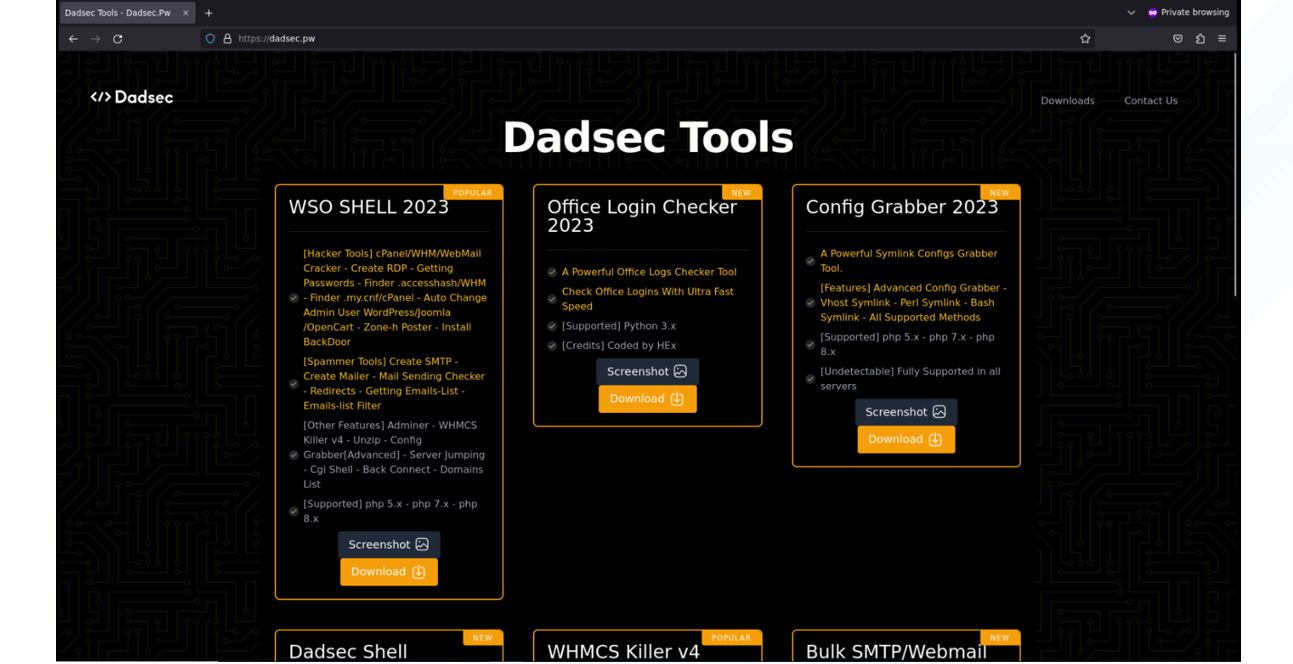
Figure 13. Dadsec webpage
Per the following Telegram channel “dadsec_pw”, this tool is made freely available by the developer. The Dadsec channel was first created in January 2023 and provides users with updates to the platform.

Figure 14. Dadsec Telegram channel
On June 17th, the developers posted that they have launched their new website, dadsec[.]store, whereby users can purchase the “Office 365 private page” from their store. The also released a new Telegram channel on 8th August to support customers of the new store. This developer activity coincides with our assessment that the campaign began in July, just after this development.
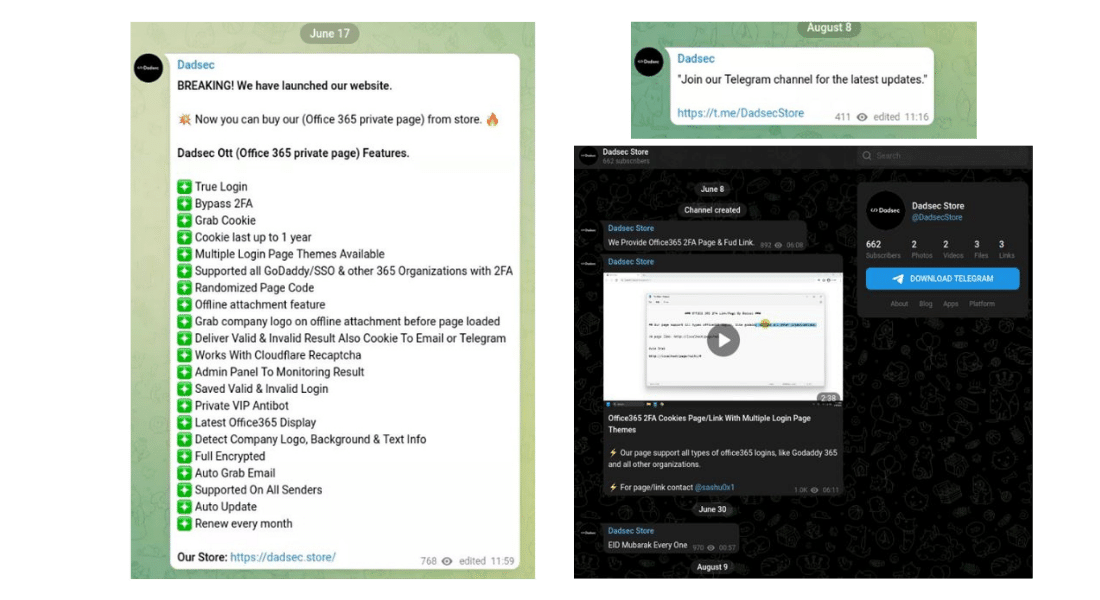
On the Dadsec store Telegram channel the developer takes users through how the phishing kit works, including grabbing and using Cookies to login in to compromised Microsoft 365 accounts, examples of the different themes as well as access and management to the phishing panels:
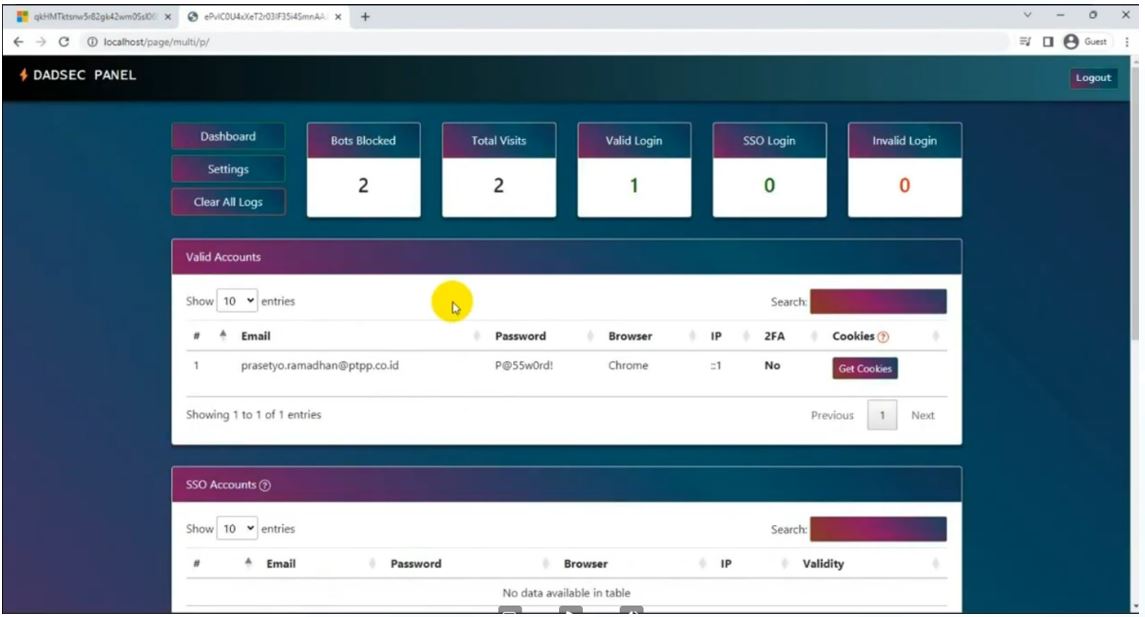
Figure 16. Dadsec Panel
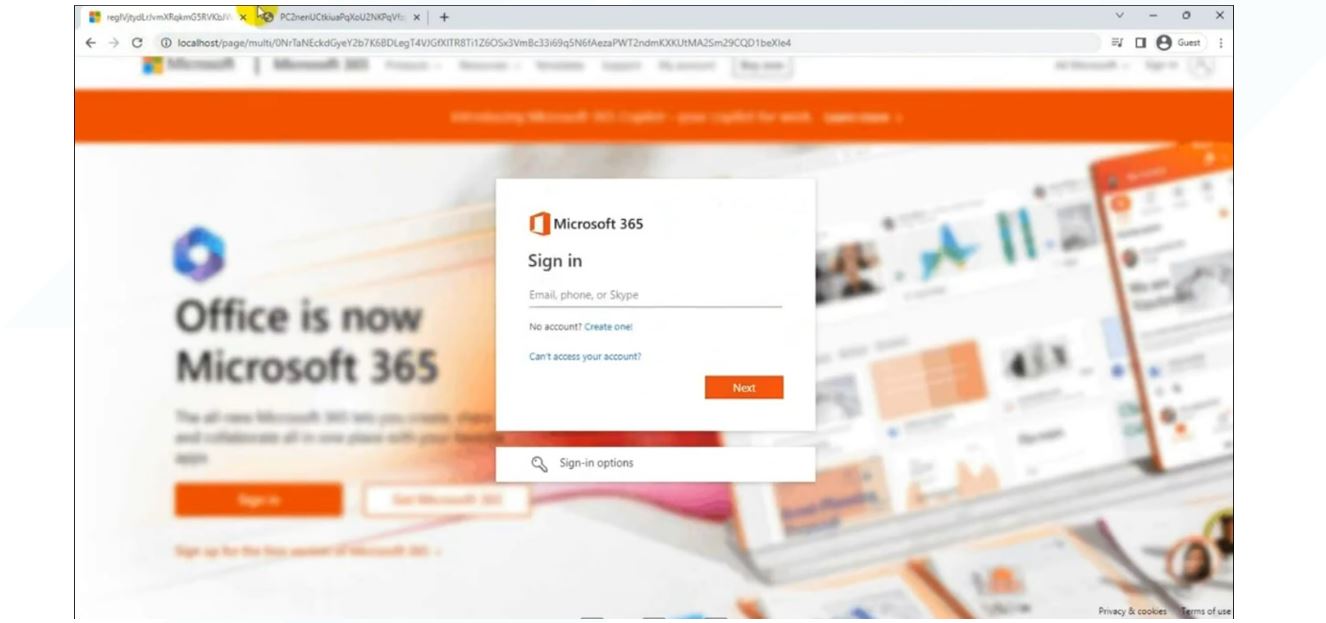
Figure 17. Dadsec harvesting page example
5.2.1 Dadsec Store
The new Dadsec store website, dadsec[.]store, is hosted on Namecheap in the US and is also protected by Cloudflare captcha on the login portal.

Figure 18. Dadsec Store login panel
Once you’ve logged in to the portal, you are met with the following dashboard:
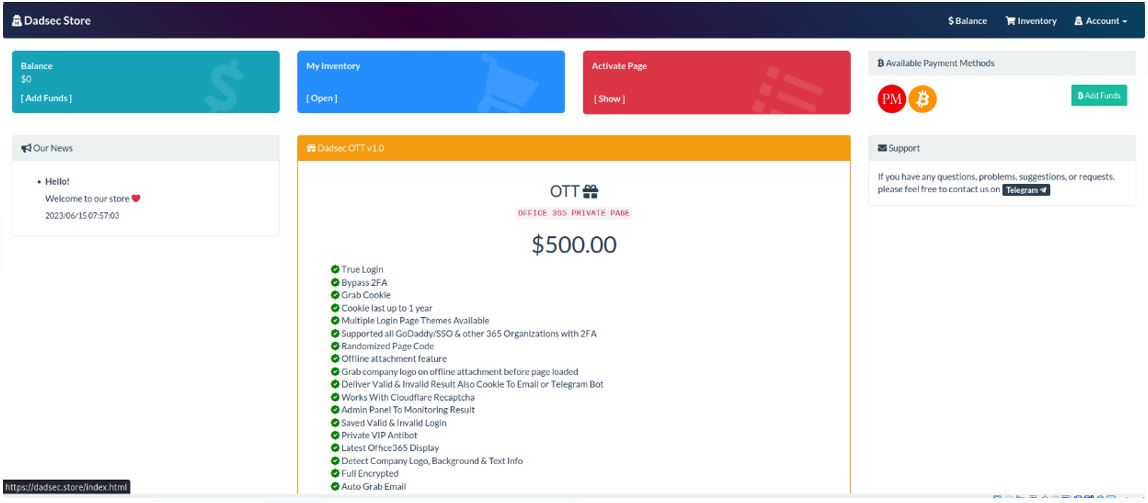 Figure 19. Dadsec store page
Figure 19. Dadsec store page
The only item that can be purchased is the “OTT” Office 365 tool which can be activated once purchased for $500. Payment can be made via Bitcoin and PerfectMoney. The support provided on the platform takes you to the Telegram account “Mr sashu0x1”, which differs from the Telegram account “Dadsec Store”:

Figure 20. Telegram account for “Mr sashu0x1”
Additionally, the developer behind Dadsec also created a YouTube account on June 8th with other instruction videos:
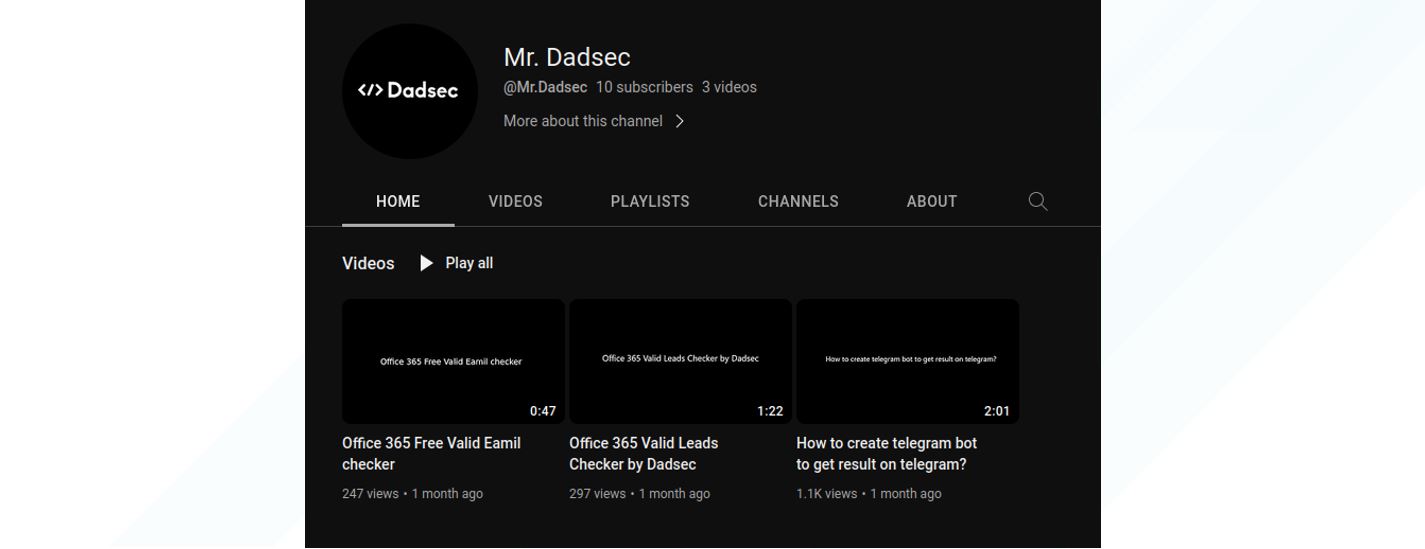
Figure 21. Dadsec YouTube Channel
5.3 Linking Campaign infrastructure to Dadsec
During analysis, we were able to single out backend infrastructure that hosted credential pages from domains linked to this campaign.
The following IP addresses are involved in this campaign:
- 95.216.158[.]157
- 93.123.73[.]210
| Country | IP Address | Host | Organisation |
| FI | 95.216.158[.]157 | www.6gdta4cfx7iibgg960im.7heob05.ru | Hetzner Online GmbH |
| BG | 93.123.73[.]210 | https://k68w0vrsnw3suiun72v9.zaq3.ru | Verdina Ltd. |
| BG | 93.123.73[.]210 | https://817x9guzn5fhx2h2nsze.2kd5.ru | Verdina Ltd. |
| BG | 93.123.73.210 | https://www.h6thcl5jiwvvx030mvxk.f3u1.ru | Verdina Ltd. |
5.3.1 Analysing the backend servers

Figure 22. Inspecting the backend servers for open services
By analysing the open ports and banners for these IP addresses we can gather additional information.
93.123.73[.]210 is running a number of open ports and services. Based on the following screenshot we can see from the Cyber Panel that the server is running LiteSpeed and also has SMTP, DNS and FTP ports open. Additionally, we see the domains and subdomains on ports 80 and 443 as well as portmapper on port 111.
The same ports and services were running on however, the SMTP banner was slightly different and didn’t reference Dadsec, instead the following string was observed “three.enb6lvl.site”.
Looking at the SMTP port 25, we can check the banner information. The notable observation is the reference to Dadsec, allowing us to connect this back to the Dadsec platform. This information is also visible on port 465 for SMTPS:
 Figure 23. SMTP service banner
Figure 23. SMTP service banner
5.3.2 Hosting providers
Hetzner Online GmbH and Verdina Ltd. appear to be two hosting providers of choice for the threat actors. These hosting providers provide automated deployment of tools such as Cyber Panel, making them an obvious choice for the threat actors.
5.3.3 Hunting for Dadsec
Now that we know some SMTP mail servers reference Dadsec, we can use this information to uncover other potential mail servers utilised by the threat actors in this campaign: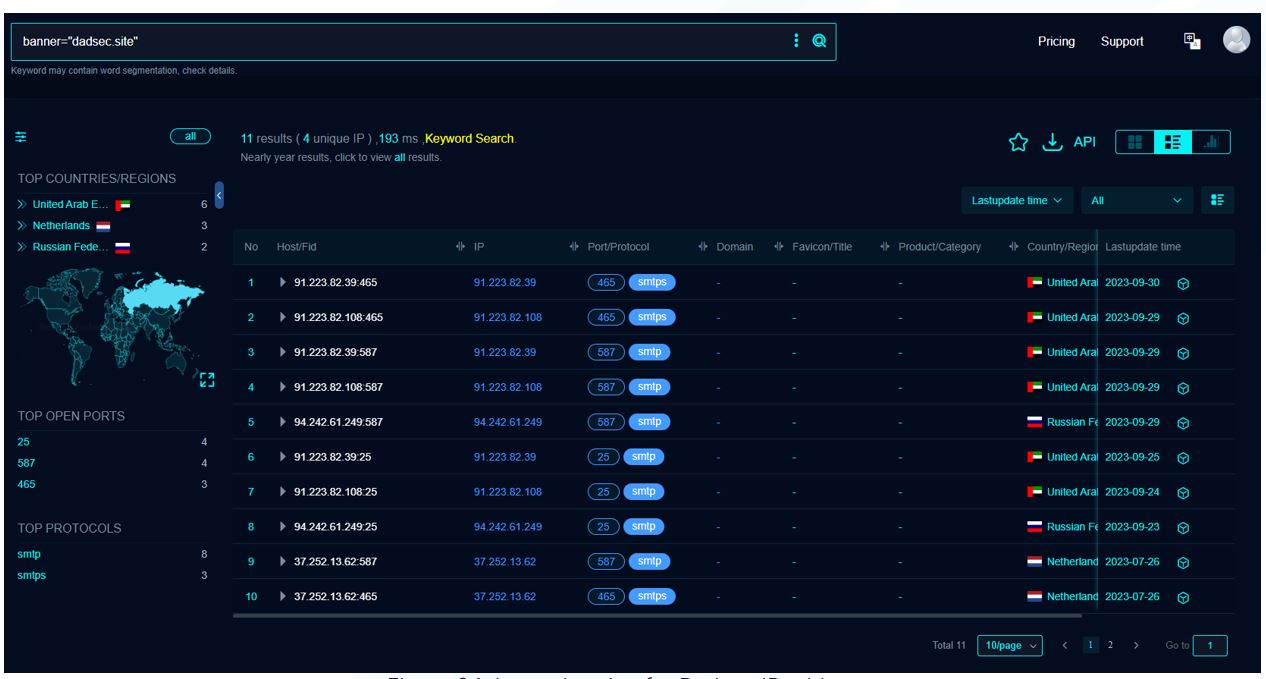
Figure 24. Image hunting for Dadsec IP addresses
| AS_Organisation | IP | Port | Country |
|---|---|---|---|
| Iws Networks LLC | 91.223.82[.]108 | 25 | AE |
| Iws Networks LLC | 91.223.82[.]39 | 465 | AE |
| Iws Networks LLC | 91.223.82[.]108 | 465 | AE |
| Iws Networks LLC | 91.223.82[.]39 | 587 | AE |
| Iws Networks LLC | 91.223.82[.]108 | 587 | AE |
| SIA VEESP | 94.242.61[.]249 | 587 | RU |
| Iws Networks LLC | 91.223.82[.]39 | 25 | AE |
| SIA VEESP | 94.242.61[.]249 | 25 | RU |
| Scalaxy B.V. | 37.252.13[.]62 | 587 | NL |
| Scalaxy B.V. | 37.252.13[.]62 | 465 | NL |
| Scalaxy B.V. | 37.252.13[.]62 | 25 | NL |
The search above identifies other infrastructure utilising the Dadsec platform and may be linked to this campaign.
6. Collaborating with ANY.RUN
During our research, CTI identified a post by a security researcher working at ANY.RUN, highlighting a regular expression query to capture phishing domains that matched the domains that we had observed. We reached out to them in order to share findings and collaborate to understand the extent of this campaign.
ANY.RUN had the following comments:
“After analyzing the structure of the phishing campaign domains that you provided, we hypothesized that an automated domain name generation system was being used, similar to Domain Generation Algorithms (DGAs), which we sometimes see in malware examined by our analytics department. This was confirmed by the uniform frequency distribution of the alphabet characters that make up domain names.
Despite this challenge, we were determined to protect our customers. To that end, we created network rules for the Suricata IDS (Intruder Detection System), a system for detecting unwanted network activity used in http://ANY.RUN. These rules rely on regular expressions to distinguish suspicious sequences of domain name characters from the domain names generated by ordinary users. In this case, the “letter-digit-letter” and “digit-letter-digit” character combinations, as well as the lengths of domains and subdomains, played an important role.
By implementing these rules in our service, we were able to enhance its detection capabilities and discover the significant scale of the malicious campaign. As a result, we increased the visibility of phishing public submissions to our users by about 2x, identifying approximately 650 phishing alerts across the samples submitted by our users per day.”
A number of examples are provided below:
https://app.any.run/tasks/60c8ef7a-c89f-435d-96cc-f6a1832a4095/
https://app.any.run/tasks/8fc0327e-2122-442a-a7b1-becce5b39fe0/
https://app.any.run/tasks/f3330f01-65cd-4353-8af5-e4f14b013d6f/
Many thanks to Jane for collaborating with us on this research and providing insight and support, including the generation of new detection content through the ANY.RUN platform.
7. Action Taken
By uncovering this dataset and information, we were able to:
- Provide technical intelligence back to the SOC for retrospective searches within the timescale of the campaign in our customer environments. This uncovered additional successful connection network events from two more of our customers, allowing us to reset user accounts. This allowed us to identify missed alerts from security tooling.
- Create analytics for our security tooling to alert on connections to new infrastructure linked to this platform and campaign, further protecting our customers in real-time.
After conducting our analysis we are able to answer a number of the questions posed by our IR teams at the beginning of the incident:
7.1 Was there a connection between our customers?
We don’t believe there was any direct connection between Bridewell’s customers, a broad spectrum of sectors are affected by this campaign.
7.2 Were there other similar phishing emails delivered to our customers?
Yes, other customers were affected by this campaign. At the time of receiving the phishing emails, no security products were detecting the links as phishing however, no compromise was detected, and user accounts were reset as a precaution.
7.3 Do we have any more information about this campaign?
We now know this campaign is utilising the Dadsec platform and can potentially be linked to a threat actor called Storm-1575 by Microsoft. The campaign is ongoing and generating new domains and VT submissions every month. CTI has enabled the SOC to conduct retro hunts and generate new detections moving forward.
8. Takeaway
Intrusion analysis is a valuable tool for any security team focused on threat intelligence. Intrusion analysis models allow those tasked with generating cyber threat intelligence to quickly analyse large amounts of incoming data and establish clear linkages between various pieces of threat information. The outcome for your security teams is a better understanding of adversary intents and strategies, which enables your business to develop proactive countermeasures against new and emerging cyber threats.
By consuming a threat intelligence service, you should expect that intrusion analysis is being performed by the threat intelligence team. This will ensure they are producing actionable insights and intelligence from attempted and successful attacks against your organisation. Bridewell CTI uses a blend of automated and manual analysis processes to keep you informed and protected against credible threats to your business and sector.

.jpg?sfvrsn=4c6fcb96_1)



